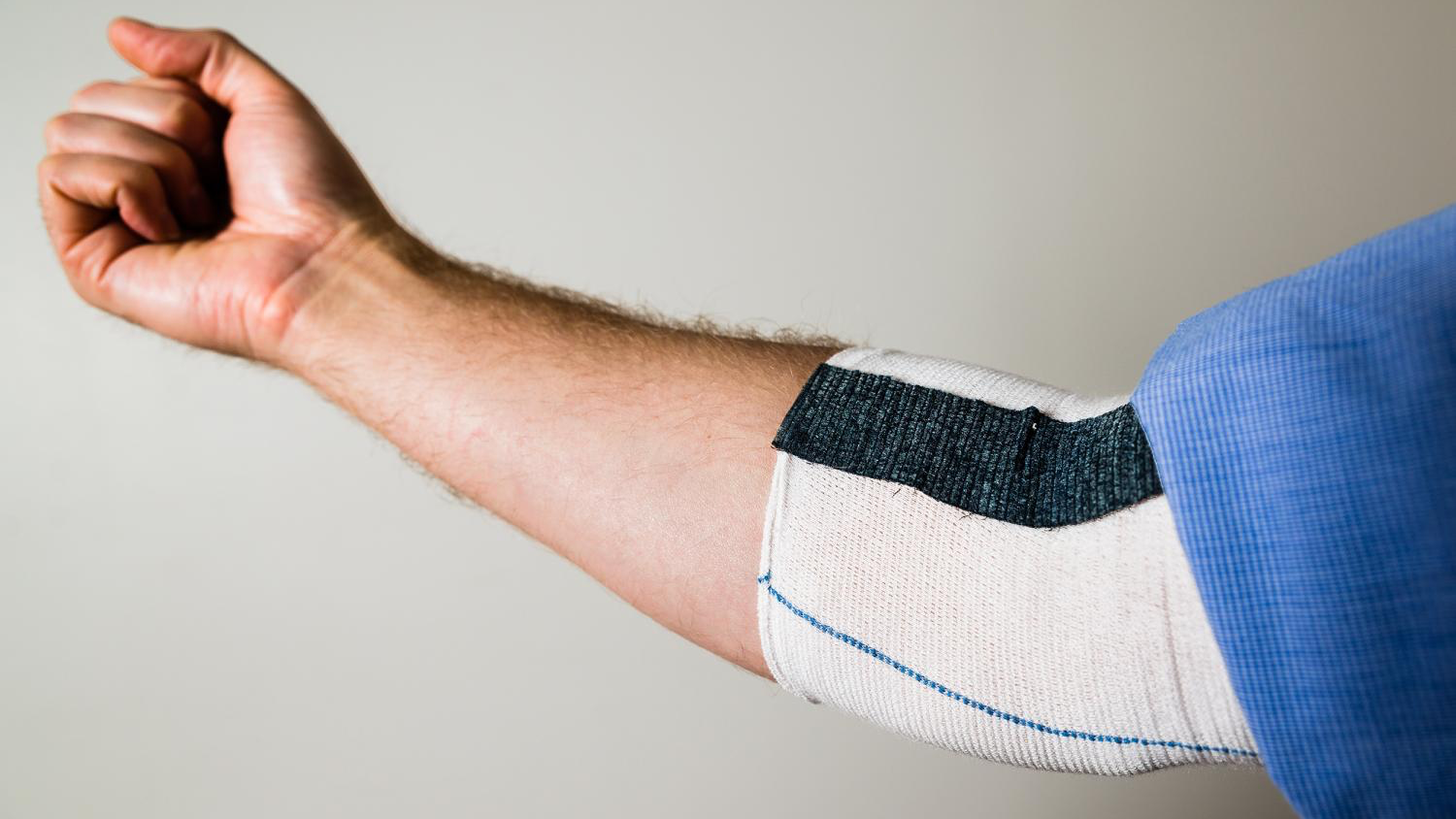'Knitted muscles' could let us build soft exoskeletons
Woven into future clothes

Want to run faster, jump higher or lift more? In the future, your clothes will give you a helping hand, thanks to new research into "knitted muscles".
Swedish researchers at Linköping University and the University of Borås have teamed up to design textiles that move in the same way muscle fibres do, paving the way for soft exoskeletons.
Enormous and impressive advances have been made in the development of exoskeletons, which now enable people with disabilities to walk again," said Edwin Jager from Linköping University.
"But the existing technology looks like rigid robotic suits. It is our dream to create exoskeletons that are similar to items of clothing."
How it works
Their knitted muscles are fairly simple. Mass-produced fabric is coated with an electroactive material that expands and contracts, causing the yarn or fibres to increase in length, when a low voltage is applied to the fabric. The structure of the fabric then controls its properties.
"If we weave the fabric, for example, we can design it to produce a high force," said Nils-Krister Persson from the University of Borås.
"But what happens is that the force developed is much higher when the threads are connected in parallel in the weave. This is the same as in our muscles."
Get the best Black Friday deals direct to your inbox, plus news, reviews, and more.
Sign up to be the first to know about unmissable Black Friday deals on top tech, plus get all your favorite TechRadar content.
Completely new applications
In testing, the researchers were able to get a simple robot device to lift a small weight, but they say this is only the beginning.
"Our approach may make it possible in the long term to manufacture actuators in a simple way and hopefully at a reasonable cost by using already existing textile production technologies," said Jager.
"What's more interesting, however, is that it may open completely new applications in the future, such as integrating textile muscles into items of clothing."
The full details of the team's artificial muscles were published in the journal Science Advances.
Most Popular


